The Red Oak tree is a very tall tree that produces some of the most beautiful fall colors as the leaves start to change. Their brightly colored leaves are also more pointed compared to the other leaves from comparable trees.
The Red Oak is well known for its ability to grow in a wide range of climates and at a faster pace than other trees.
Let’s dive into all the Red Oak Tree Facts!
Red Oak Scientific Name
The Red Oak scientific name is Quercus rubra.
Red Oak Height
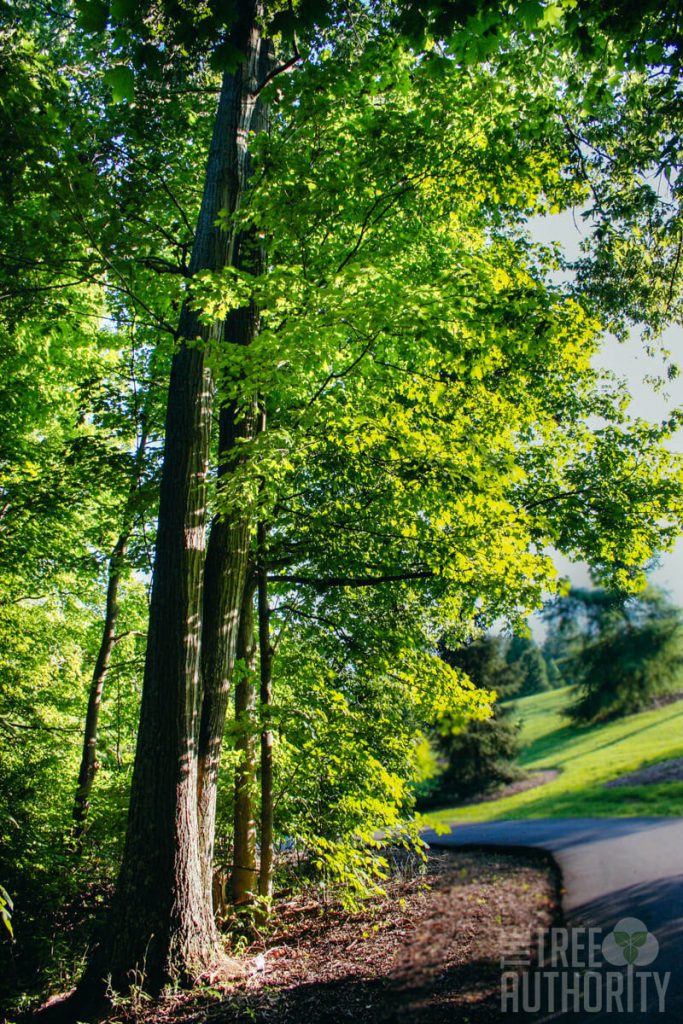
Red Oak trees have an average height of 65-85 feet and there are some Red Oaks that are over 100 feet tall.
Red Oak Identification
Red Oak tree identification is typically done by looking at its acorns and also by the leaves. If you notice a sharp-pointed lobe when looking at the leaves, you’re more than likely looking at a Red Oak tree.
Some people do get a Red Oak tree and a White Oak tree confused but one of the biggest differences is that a Red Oak tree will take 2 years to grow and mature while a White Oak tree only takes about a year.
Red Oak Bark
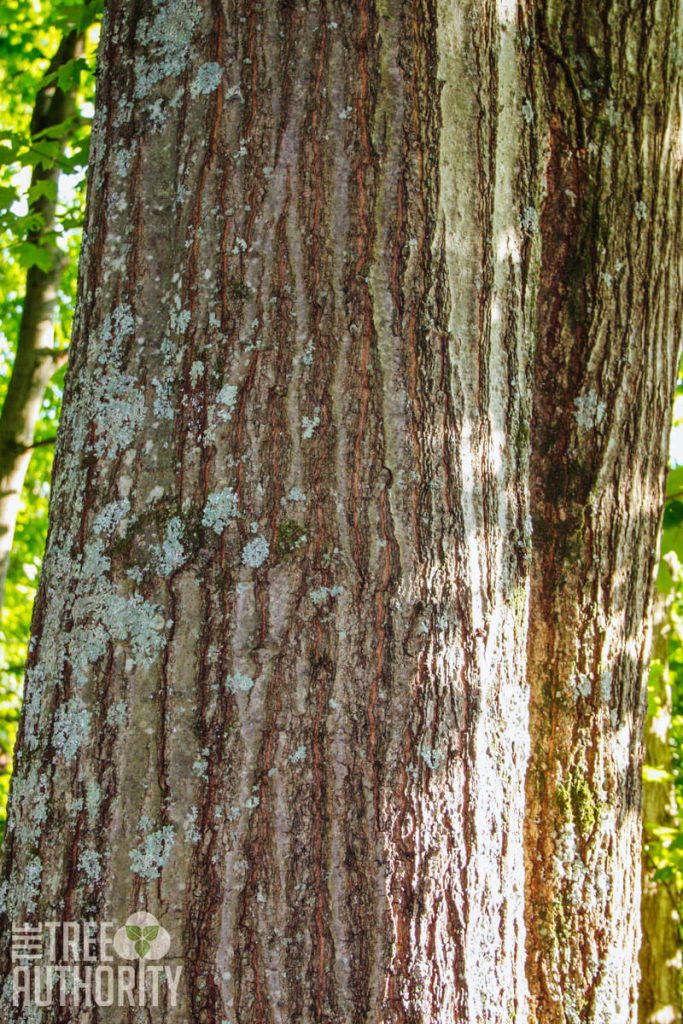
Red Oak tree bark is pretty easy to distinguish from other types of bark because it has a platelike look and texture to it. It’s often referred to as a tiger oak and this is because it looks like vertical stripes coming down the tree that get more visible as the tree ages.
Red Oak Tree Leaves
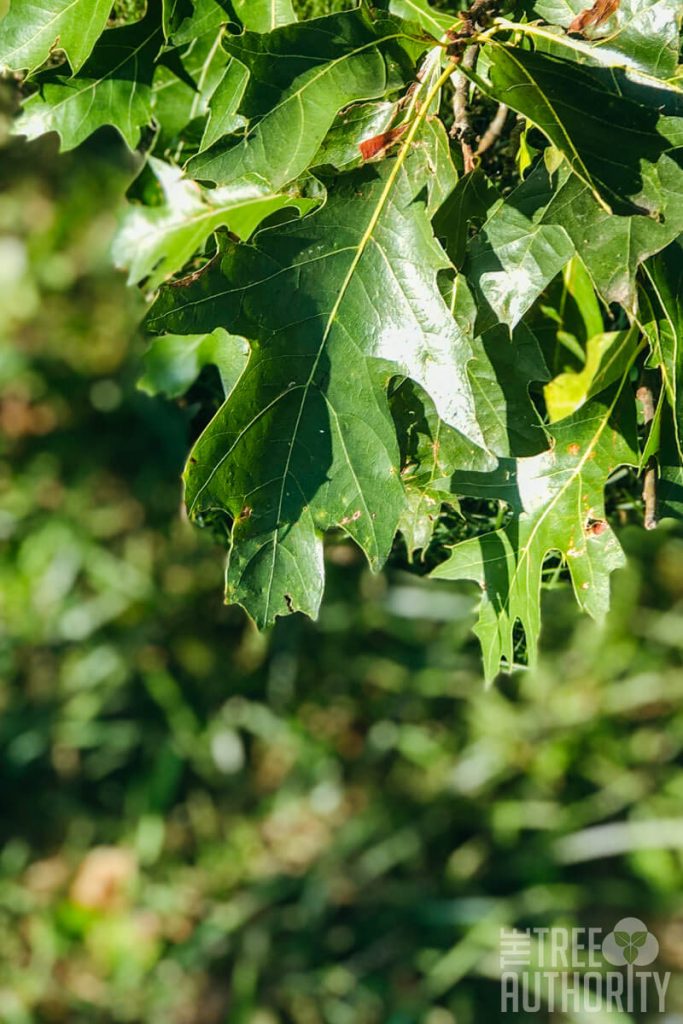
Take notice of the Red Oak tree leaf shape because it’s quite different from other trees out there.
While the leaves are simple, they can be up to 8 inches in length and have between 7-11 different areas to them where they’re shaped.
Red Oak Buds
If you see a Red Oak bud, you’re going to know it. The buds on this tree have a sharp point to them and are hairy looking as well.
They won’t be overly large but are going to be up to ⅓ of an inch in length.
Red Oak Tree Acorns
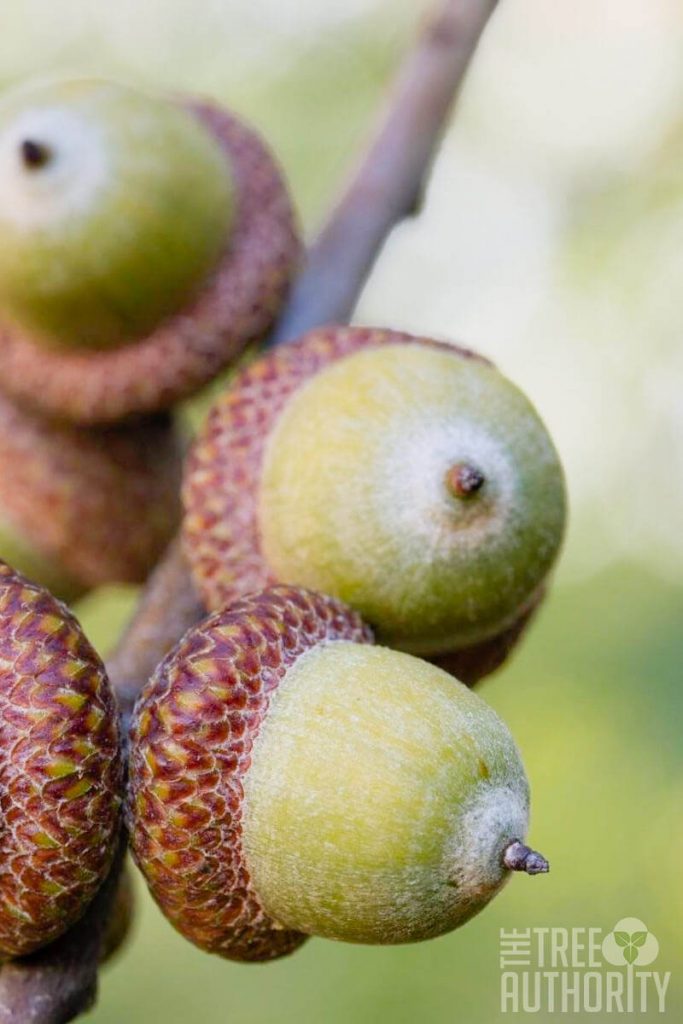
One of the other ways to distinguish a Red Oak tree is to take a peek at the acorns. This type of tree has larger acorns when compared to the other various oak and acorn trees.
Keep in mind that the acorns can vary in size, all the way up to ¾” long. The very top of the acorn also sits on top so that is another good identifier as well.
Red Oak Fall Color
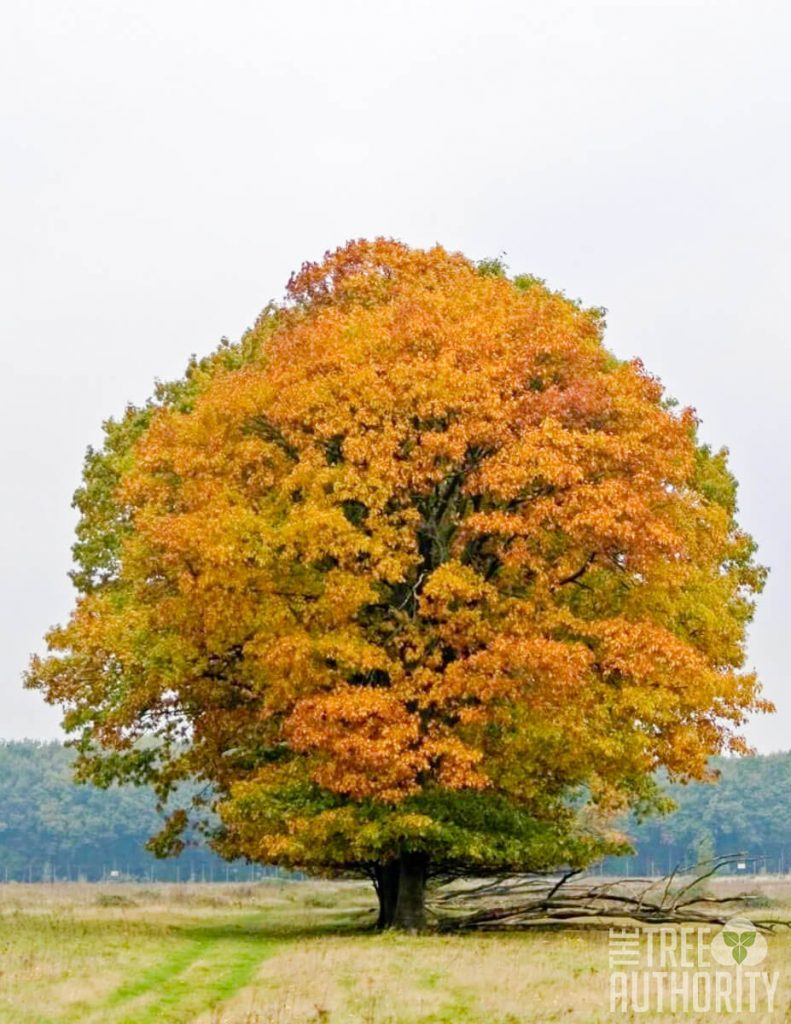
The Red Oak tree during the fall is typically brown in color but that doesn’t mean that you might not see more vibrant colors (such as red) as well.
Planting a Red Oak tree
How to plant a Red Oak Tree
When planting your very own oak tree, make certain to give the base plenty of room. This will allow it to grow efficiently and easily without worry over the next few years.
Dig a hole and make it twice the size of the entire root that you’re putting into the ground.
Surround it with soil and water it so that it stays healthy and moisturized as this is the key to it’s growth.
When to plant a Red Oak tree
The best time to plant a Red Oak tree is to plant it in the Spring.
Red Oak growth rate
Typically, the growth rate of a Red Oak tree will be over a span of 6 weeks during the Springtime.
Are Red Oaks fast-growing?
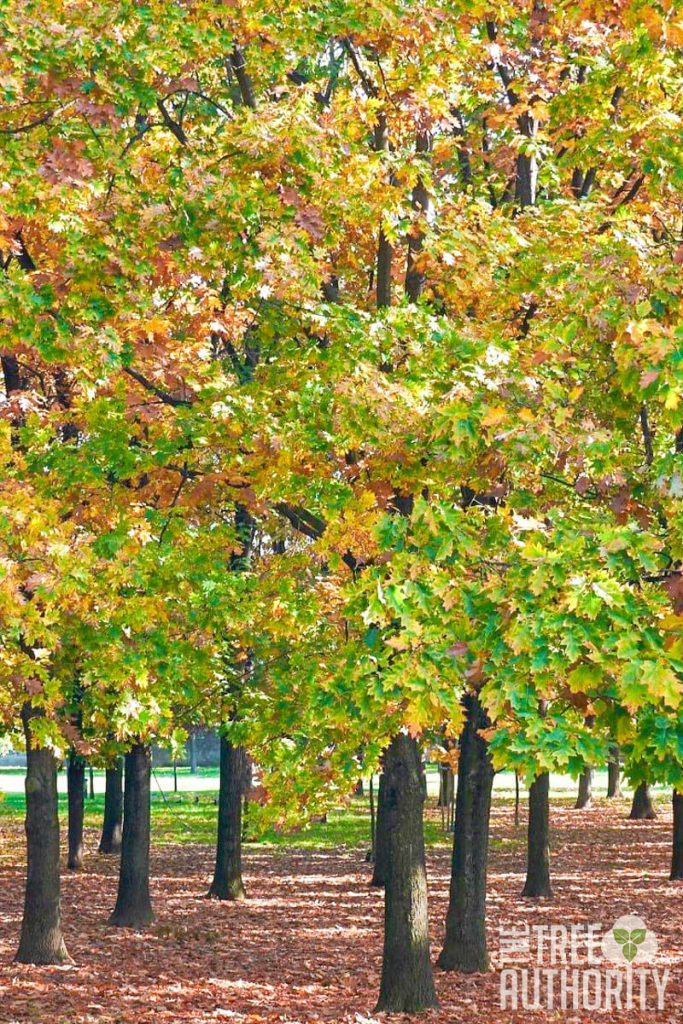
Yes, they are considered a fast-growing tree. As long as you’re keeping the soil moist, they’re going to grow fast.
The growth rate will vary but there have been cases where some trees have grown 30 inches over 30 years of time.
Compared to other trees, Red Oak trees grow quickly.
Red Oak Root System
The Red Oak youth trees have a tap root.
Red Oak Tree Diseases
In terms of Red Oak diseases, these types of trees don’t usually have any major issues.
Even if it were to get anthracnose, the tree can still lose up to 50% of the leaves and it will still be fine in the end. It will recover.
One issue to keep an eye out for is Oak wilt but it isn’t something that is widely spread out all over.
Red Oak Tree Facts: Conclusion
In conclusion, the decision for many people will come down to deciding between a Red Oak and a Pin Oak tree. Keep in mind that Red Oaks do a good job of getting rid of their own limbs so you don’t have to prune as much as you would if you had a Pin Oak tree.
Also, Red Oaks really do have quite a beautiful and grand appearance that can add a nice touch to your outdoor landscaping.
You may also be interested in:
Bald Cypress Tree Facts (Taxodium distichum)
White Oak Tree Facts ( Quercus alba)
Silver Maple Tree Facts (Acer Saccharinum)
Be sure to pin this post for later:


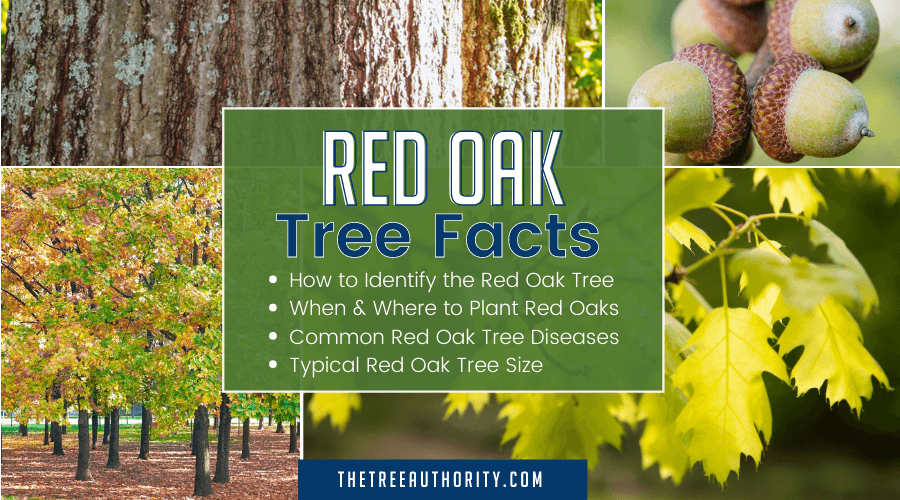
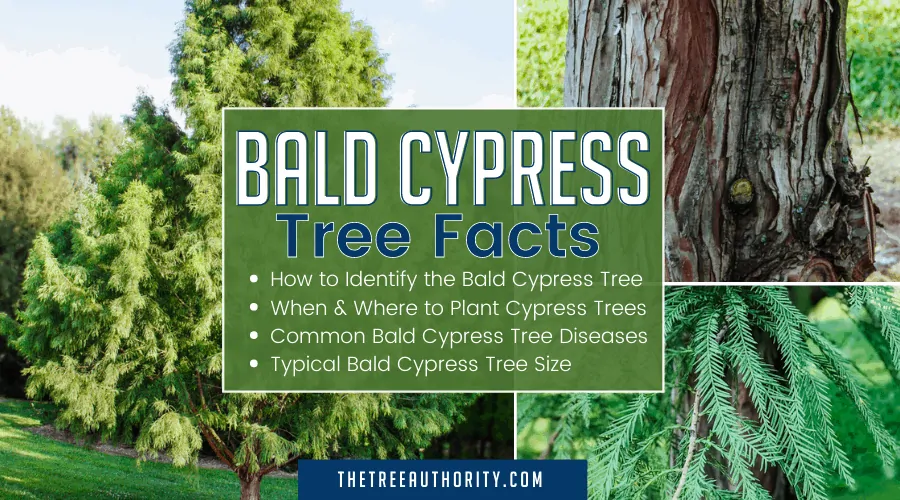
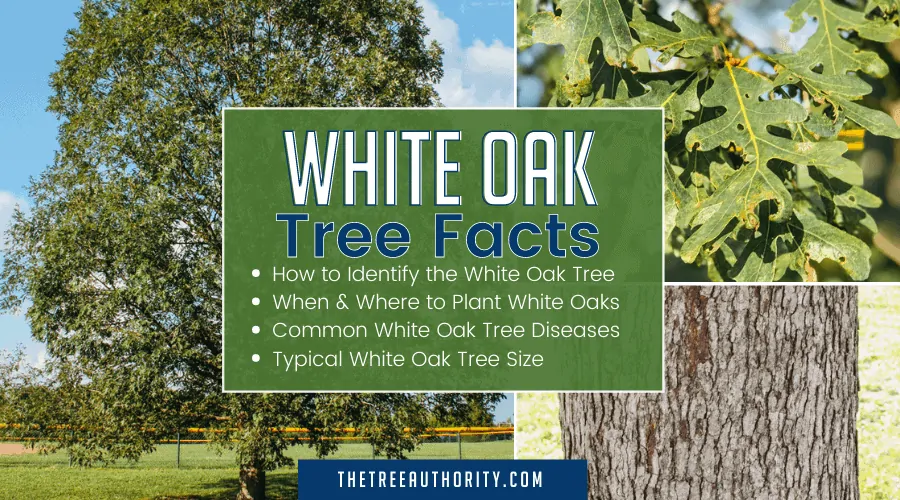

We live in Overgaard, AZ which is in the NE part of the state at 6600’.
We are considering several (5) red oak 4’ seedlings. Our zone is 5-6.
Our soil is acidic with large Ponderosa and piñon, fast draining. Lots of room, full sun.
Would you recommend this beautiful tree for our area?